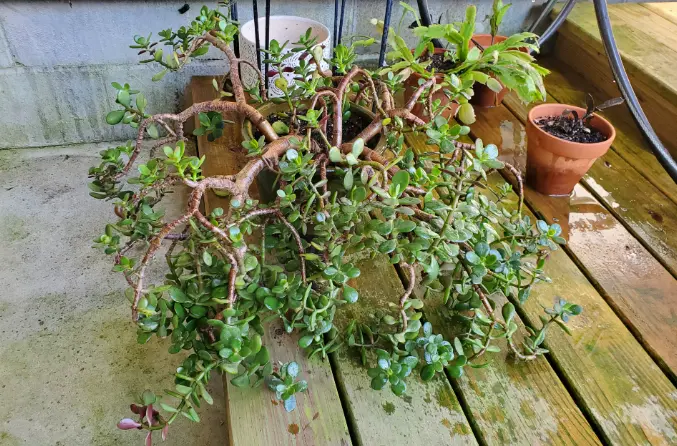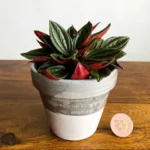Understanding the Summer Struggle for Houseplants
As temperatures rise during the summer months, indoor plants can face many unique challenges. High heat, increased sunlight, and decreased humidity can stress even the most resilient houseplants. Unlike outdoor plants that benefit from breezes and rain, indoor flora rely solely on the environment you create for them inside your home. If you’re noticing drooping leaves, scorched foliage, or faster drying soil, your plants might be telling you they’re struggling with excess heat.
Knowing how to adapt your indoor plant care routine during the summer can help keep your leafy companions healthy and thriving. Whether you’re growing pothos, spider plants, peace lilies, or calatheas, the following strategies will help you protect your houseplants from summer stress.
Adjust Watering Habits for Hotter Weather
When summer arrives, one of the first things you’ll notice is how quickly soil dries out. Hotter indoor temperatures and drier air speed up evaporation, meaning your plants may need more frequent watering. However, overwatering in hot weather can be just as dangerous as neglect, especially if soil remains soggy.
Here’s how to find the right watering balance:
- Check soil moisture more often: Use your finger or a moisture meter to check the top inch of the soil. Only water when it’s dry, unless your plant species prefers slightly moist soil at all times (like ferns or calatheas).
- Water early or late in the day: Watering in the morning or evening helps reduce evaporation and gives your plants time to absorb moisture before or after peak heat hours.
- Use room temperature water: Avoid shocking plants with very cold or very warm water. Let tap water sit for a few hours before watering to dispel chlorine and reach a safe temperature.
Protect Plants from Direct Sunlight
Indoor plants that enjoy bright light can still suffer from intense summer sun, especially through south or west-facing windows. Too much direct sun can scorch leaves and cause fading, browning, or crispy edges. Even sun-loving varieties like succulents can be burned if they’re not acclimated to the change in sun intensity.
To prevent light-related stress:
- Relocate sensitive plants: Move them a few feet away from sunny windows or into rooms with bright, indirect light.
- Use sheer curtains or blinds: These diffuse harsh rays and protect foliage from sun damage without depriving your plants of light.
- Rotate pots regularly: This ensures even light exposure and helps prevent one side of the plant from becoming overexposed or leggy.
Maintain Healthy Humidity Levels
Many houseplants, especially tropical varieties like orchids, ferns, and monstera, thrive in high humidity. Unfortunately, summer heat often lowers indoor humidity levels, especially if air conditioners are running. Dry air can lead to brown leaf tips, increased transpiration, and weakened plant health.
Simple ways to raise indoor humidity:
- Group plants together: Plants naturally release moisture into the air through transpiration, so clustering them creates a more humid microclimate.
- Use a humidifier: A small room humidifier can significantly improve humidity, especially in rooms with multiple moisture-loving plants.
- Pebble trays with water: Place pots on trays filled with pebbles and water, ensuring the pot isn’t sitting directly in the water. The evaporating water increases humidity around the plant.
- Mist sparingly: Some plants benefit from light misting, but be cautious — frequent misting can invite fungal issues, especially if leaves stay wet for too long or there’s poor air circulation.
Monitor for Pests and Diseases
Heat-stressed plants are more susceptible to pests like spider mites, mealybugs, and aphids, all of which thrive in warm, dry conditions. Summer also brings an increased risk of fungal diseases, especially if humidity levels are too high without proper ventilation.
Best practices to keep pests at bay:
- Inspect plants weekly: Check undersides of leaves, stems, and soil for signs of pests — tiny webs, eggs, or sticky residue (honeydew) are warning signs.
- Isolate infected plants: If you detect a pest problem, separate affected plants from others until they’re treated.
- Wipe leaves clean: Dust and debris can attract pests and block photosynthesis. Gently wipe leaves with a damp cloth every few weeks to keep them healthy.
- Ensure airflow: Good ventilation discourages fungal growth. Use fans if needed to circulate air, especially in high-humidity environments.
Adjust Feeding and Fertilization
Summer, being a growing season for many houseplants, is generally a good time to fertilize. However, excessive heat may slow down growth or cause some plants to go dormant, which makes overfeeding dangerous. Too much fertilizer can burn roots, especially when combined with dehydration.
Here’s how to fertilize safely during hot months:
- Dilute your fertilizer: Many houseplants do better with a half-strength liquid fertilizer every 4–6 weeks in summer. Too much nitrogen can stress heat-sensitive roots.
- Watch for signs of overfeeding: Yellowing lower leaves, salt buildup on soil surface, or crispy leaf edges can mean it’s time to hold off on nutrients.
- Fertilize only if the plant is growing: If your plant isn’t putting out new leaves or stems, skip fertilizing and just focus on hydration and basic care.
Choose Plant Locations Thoughtfully
During summer, areas near windows, vents, or exterior walls can get much warmer than expected. These “hot zones” can cause localized temperature surges and shock sensitive plants. On the other hand, over-reliance on air conditioning can create cold drafts that aren’t friendly to tropical species.
Tips for safe repositioning:
- Move away from heat sources: Keep plants away from windows during intense midday sun or from walls that absorb lots of external heat.
- Avoid chilly air drafts: Don’t place tropical or humidity-loving plants in direct paths of A/C airflow or near fans.
- Consider using shelves or plant stands: Elevating plants off warm floors or radiators can help reduce heat stress.
Repotting Caution During Hot Weather
Summer may seem like a good time to repot, considering the active growth period, but excessive heat can complicate this process. Repotting causes root disturbance and stress, and high temperatures can prolong recovery or lead to transplant shock.
If you must repot during the summer:
- Do it in the morning: Cooler times of day reduce additional stress from heat.
- Avoid fertilizing immediately: Wait a few weeks after repotting before applying nutrients to give roots time to settle.
- Keep the plant in a shaded spot for a few days: Allow it time to recover from shock without exposure to intense light.
Conclusion: Keeping Plants Cool, Calm, and Collected
Helping your houseplants thrive during the summer heat involves more than just giving them extra water. By adjusting your care routine to accommodate higher temperatures, brighter light, and lower humidity, you’re creating a controlled microclimate where your plants can continue to grow, even during heatwaves.
Remember to observe your plants regularly — they’ll tell you if they’re uncomfortable. With the right strategies, a bit of attentiveness, and some minor adjustments, you can protect your indoor garden and ensure your houseplants stay vibrant and healthy all summer long.
References
- Deardorff, D. C., & Wadsworth, K. M. (2011). What’s Wrong With My Houseplant? A Visual Guide to Easy Diagnosis and Organic Remedies. Timber Press.
- RHS. (2022). Indoor plants: general care. Royal Horticultural Society. Retrieved from https://www.rhs.org.uk
- Steinkopf, L. (2017). Houseplants: The Complete Guide to Choosing, Growing, and Caring for Indoor Plants. Cool Springs Press.








